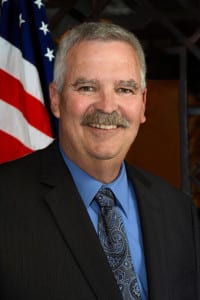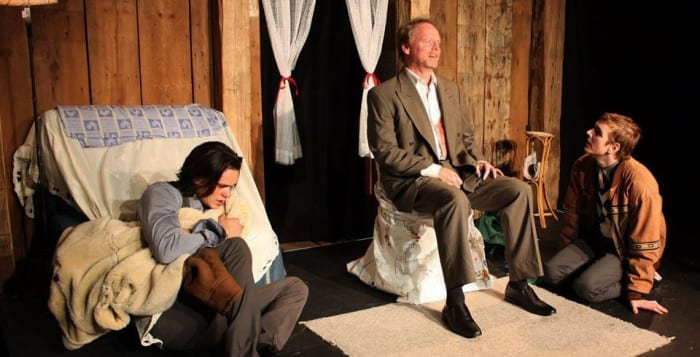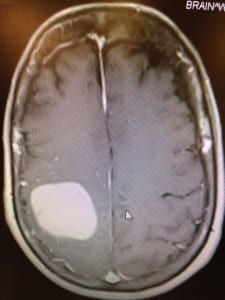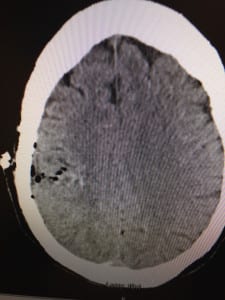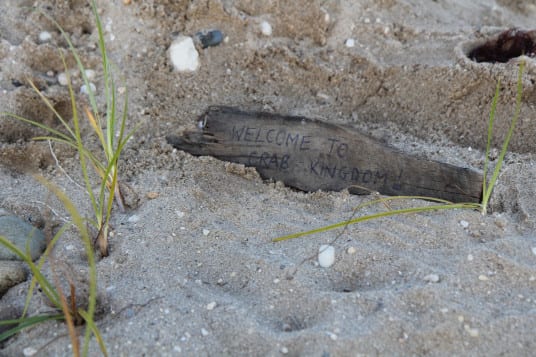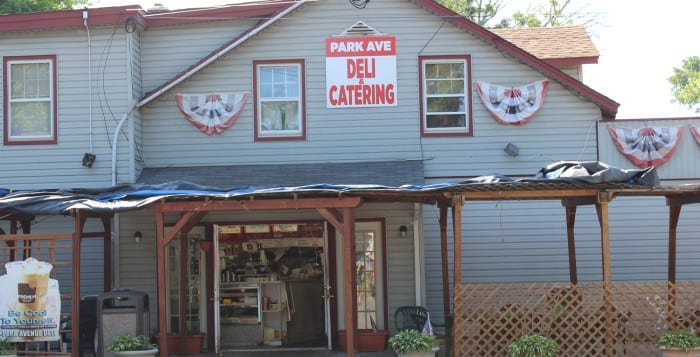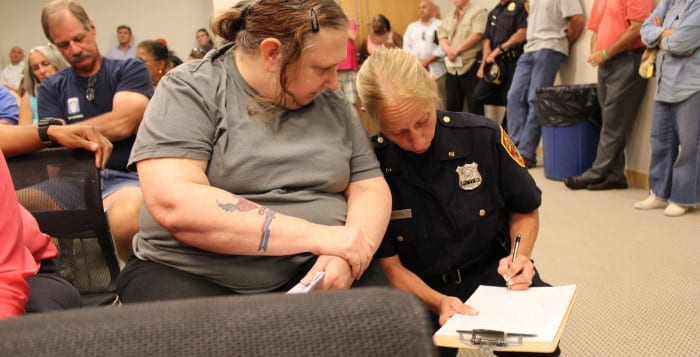After serving for more than six years as a trustee on the Northport-East Northport school board, Jennifer Thompson has set her sights on a bigger role.
Thompson, 44, wants to be the Huntington Town Board’s next councilwoman, and she is seeking election to one of two seats up for grabs on Nov. 3. She’s running alongside incumbent Councilman Gene Cook (I), both of whom are endorsed by the Huntington Town Republican Committee.
Last Friday, the Northport mother-of-two sat down for an interview at Book Revue in Huntington to talk about her campaign. She had just gotten back from a boat trip to Connecticut to celebrate her birthday on her family’s 27-foot sailboat, with her husband Brent and their children, Sterling and Lauren.
A passion for education was instilled in Thompson at a young age — through her parents who emigrated to the U.S. from eastern India — and it seems fitting that Thompson’s first role as a public servant was on the school board, where she felt a responsibility to be engaged in the community.
“Both of my parents had a strong sense to live differently, and the main reason they immigrated was for a better education,” Thompson said.
Although she was born in Queens, she lived in California for most of her life, moving there when she was four years old. Thompson received her undergraduate degree from The Master’s College, and her graduate degree from California State University. After graduating, she worked as a special education teacher in California and then as an administrator.
In 2006, Thompson and her family moved to Northport. Her husband got a job at Suffolk County Community College. Just four years later, she was petitioning for her first term as a school board trustee.
If elected, Thompson would transition off the school board, and her seat would likely remain vacant until elections in May, although it would be up to the board to decide exactly how to proceed.
“She is very focused and approachable, and is 100 percent focused on whoever she is representing,” Tammie Topel, a fellow school board trustee, who has served four years with Thompson, said about her colleague. “She dedicates herself and is extremely reliable.”
At a recent Suffolk County Police Department 2nd Precinct community meeting, residents called for an increase in the police force following three shootings in July and August.
Thompson was at that meeting, and afterwards she researched whether adding staff is the best solution to solve the problem. “Sometimes it’s about your resources and seeing if you’re using them as effectively as possible.”
According to Thompson, the Town of Riverhead has specialized police forces, and she believes this contributes to the town thriving in the last five years. She said she believes the solution of more specialized forces would work in Huntington as well.
Residents have sounded off on overdevelopment in Huntington Town in the past few years. Thompson is clear that she is against overdevelopment, and that she would’ve voted against the zone change permitting the Seasons in Elwood, a 256-unit project for individuals 55 and older, to go through.
“That community did not want it in their community, and the fact that the town council disregarded that is, I think, heartbreaking,” she said. “They were elected by these people to be their voice and to not come alongside the very residents they represent. I think it is anti-democratic.”
She added that she feels that Huntington has the right balance of industrial and business areas and open land, something she doesn’t want to see compromised. “If we wanted to live in Queens, we would’ve bought a house in Queens.”
Recently, Eaton’s Neck residents have been urging the town board to allow for longbow hunting of deer. The residents claim deer have overpopulated the area and pose a public health risk, as the animals are linked to increases in tick-born illnesses like Lyme disease.
This issue literally came into Thompson’s backyard the night before, as she showed a photo of the deer by her fence she snapped from her bedroom window. While she is mindful of animal’s rights, she said she is more mindful of the risk to the public. “I’m always going to be more concerned with public safety.”
If elected, Thompson would like to introduce legislation governing town board term limits. Two terms would be her preference.
“If our highest elected official can’t go more than two terms, why should local officials go longer?”
Thompson confirmed that if not elected, this would be her last term as a school board member. She signed a petition brought to the board earlier this summer to reduce the size of the school board. The petition also suggested looking into term limits.
“I signed the petition because I think the community deserves the opportunity to vote on it,” she said. “Whatever the community decides, I will support that.”
Tim Farrell, a personal friend of Thompson’s for more than 10 years, believes Thompson will bring a powerful work ethic to the town board, if elected. He believes she will also bring a level of transparency and honesty.
“She never settles for anything, even small things, like planning a weekend for the kids,” he said. “She doesn’t generally fail; she won’t allow it.”



